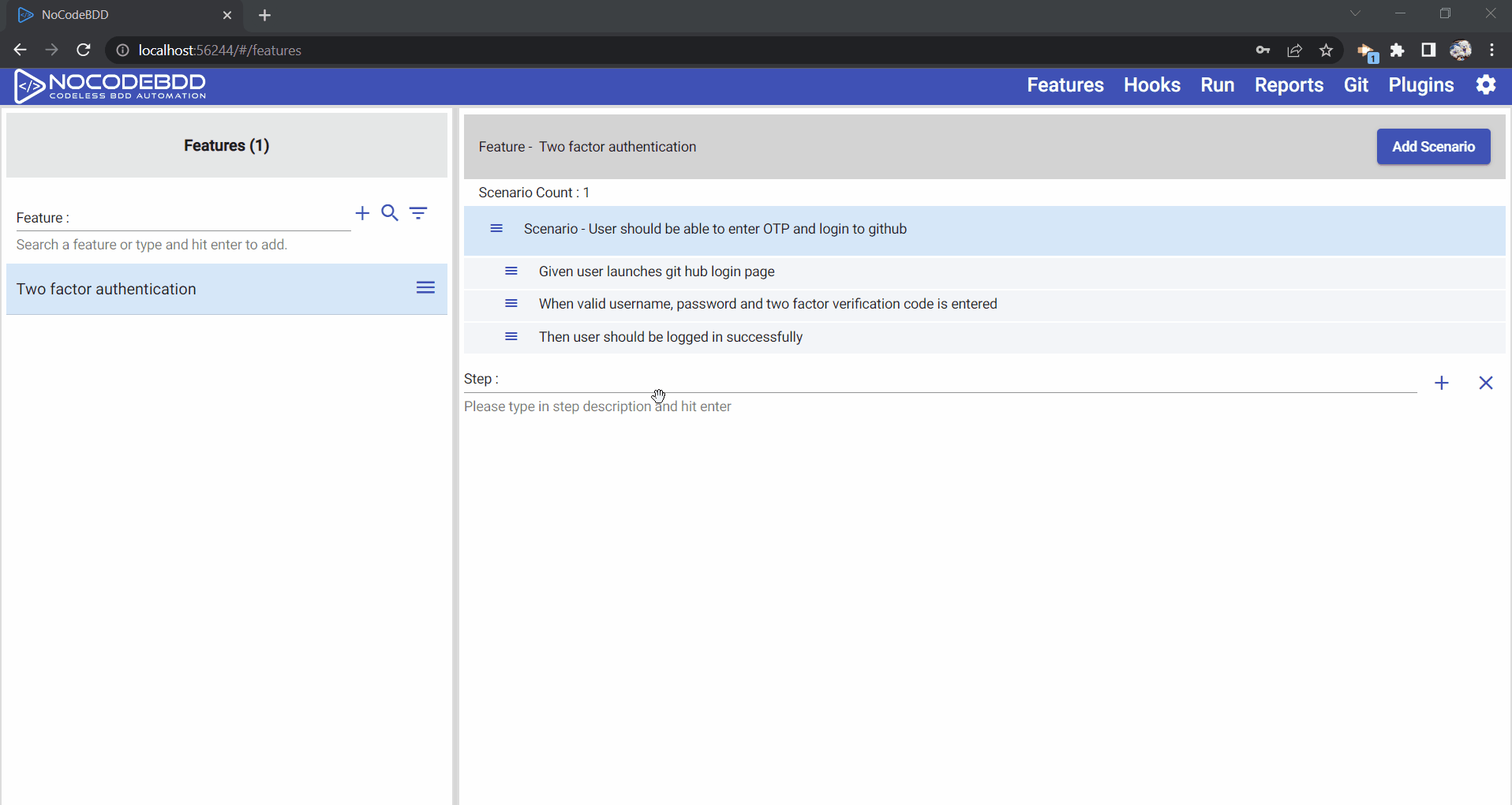by nocodebdd
Share
Many websites now require two-factor authentication (2FA) as an extra security measure beyond a standard username and password. When a user enables 2FA for their account, they will receive a code (OTP) via their phone or email after successfully logging in with their username and password. This code must be entered on the website to complete the login process and confirm the user’s identity, helping to prevent unauthorized access to the account.
Using NoCodeBDD, it is easy to test web or mobile applications that require two-factor authentication without writing any code. Here’s how:
- Obtain the secret value of the application you want to set up two-factor verification for.
- Go to the NoCodeBDD settings page and select Two-Factor Verification.
- Click “Add Time-Based One-Time Password Configurations.”
- Provide a key value (e.g., “otpKey”) and the secret value, then save the configuration.
- In your automation, use the key within double curly braces (e.g., {{otpKey}}) wherever you want to pass the verification code.
A GIF is attached to show how this is done in NoCodeBDD. As you can see, it is possible to test applications that require 2FA using just a few simple steps and without any code.

You can also checkout these articles to see how you could automate Web, Mobile or API without code using NoCodeBDD:
You can download a free version of NoCodeBDD from www.nocodebdd.com/download
STAY IN THE LOOP
Subscribe to our free newsletter.
I had the pleasure of hosting a webinar with two industry experts, Rebecca Stone from IBM. During the webinar, Rebecca shared her experience in successfully implementing BDD in a large government project, highlighting the benefits of BDD, why and how she used OOPSI and its role in overcoming challenges faced […]
Rolling out BDD in a project requires careful planning and a well-structured process. As a tech consultant on a large project, I had to make several changes to their BDD process and automation suite implementation. Some changes were straightforward, while others proved more challenging. If you’re considering implementing BDD in […]
10 Tips for Writing Effective BDD Scenarios When rolling out BDD having a clear and concise scenario writing is a vital aspect of successful BDD adoption. This blog post will provide you with 10 tips to enhance your BDD scenario writing, making it easy to understand, maintainable, and efficient. 1. […]
It will be difficult to automate testing if you don’t consider it when creating your web application. It will be difficult, regardless of whether you are a code wizard or a no-code ninja. Here are some crucial ideas to have in mind as you develop your app to make testing a […]


